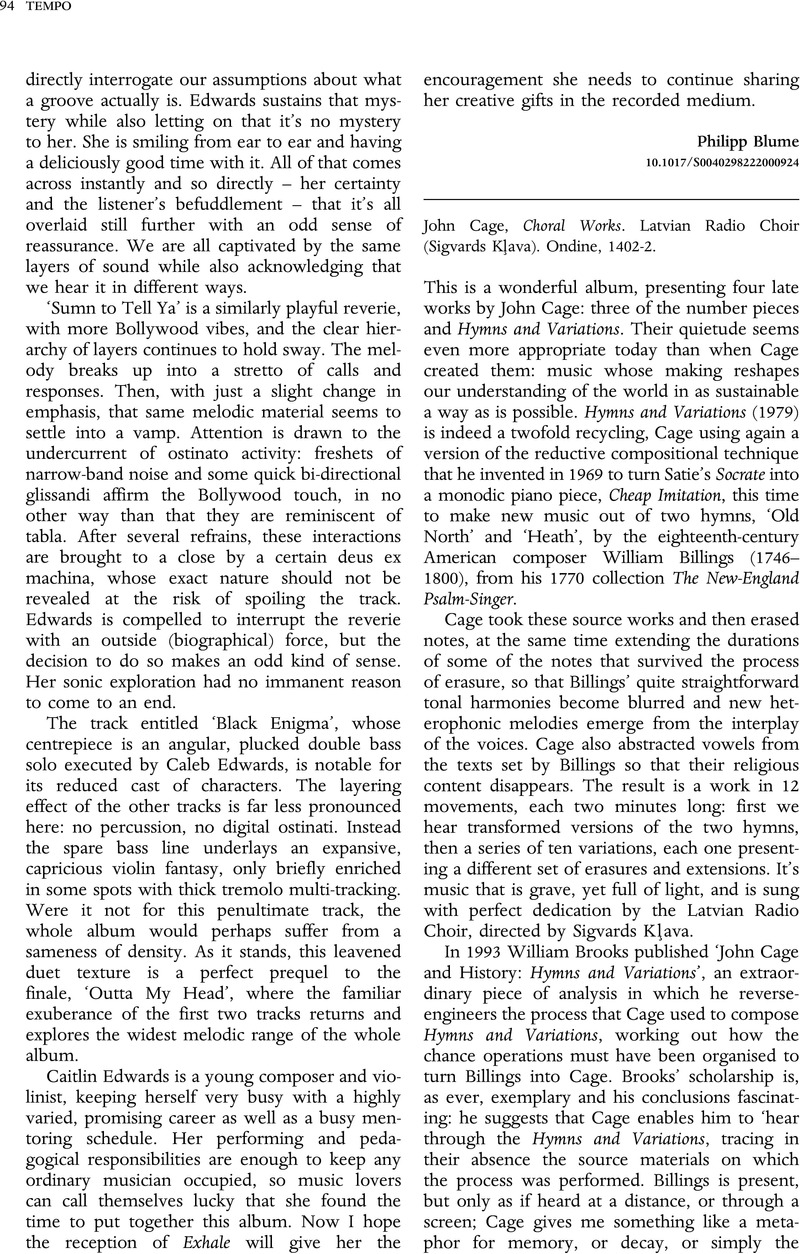No CrossRef data available.
Published online by Cambridge University Press: 11 January 2023

1 Brooks, William, ‘John Cage and History: Hymns and Variations’, Perspectives of New Music, 31, no. 2 (1993), p. 99CrossRefGoogle Scholar.
2 Brooks, ‘John Cage and History’, p. 100.
3 Cage, John, A Year from Monday (Middletown: Wesleyan University Press, 1967), p. 136Google Scholar.